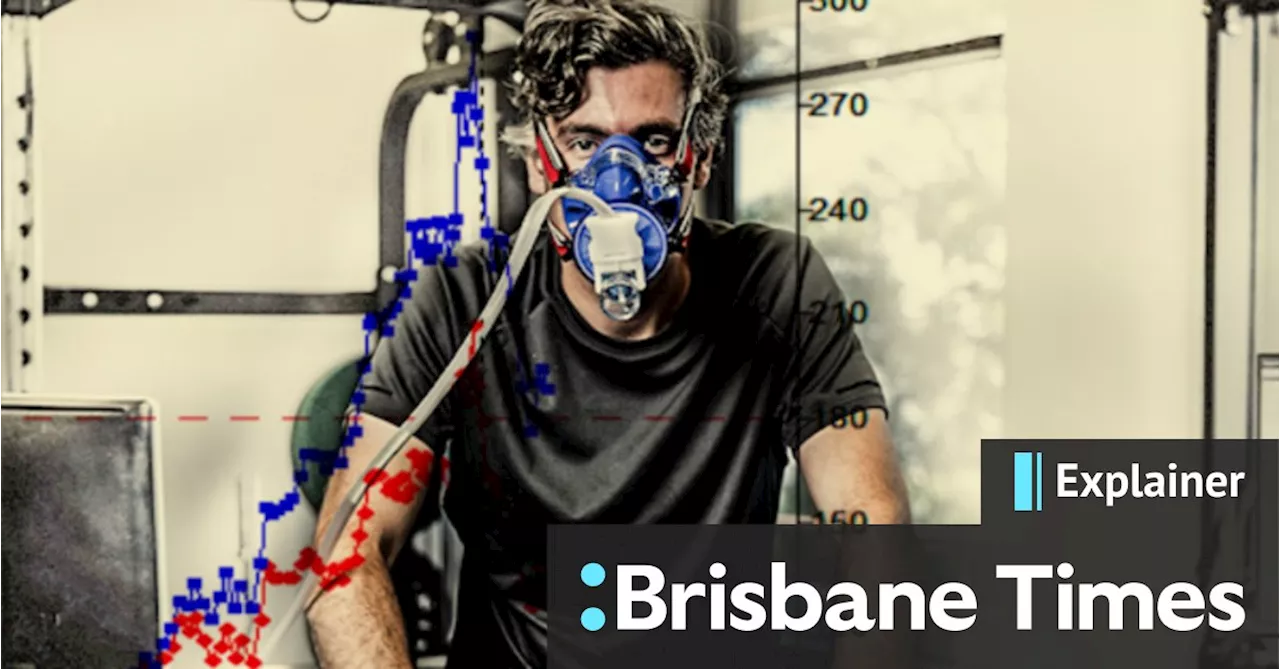This article explores the multifaceted concept of fitness, delving into its various definitions, historical context, and the physiological and psychological benefits associated with it. It examines the often-confusing and overwhelming fitness advice prevalent today, emphasizing the importance of simplicity and consistency over time. The article also highlights the crucial role of different fitness components, such as cardiorespiratory endurance, muscle strength, and balance, in leading a healthy and fulfilling life.
At first, it's like a gentle spin class, except for the medical equipment we're hooked up to: an oxygen mask, heart-rate monitor, and sphygmomanometer (that machine with the inflatable armband that measures blood pressure). They're all recording our exertions on an exercise bike. “You don’t feel lightheaded? Any chest pain?” asks professor of clinical exercise physiology Itamar Levinger. “No,” we say, muffled by the breathing apparatus.
In fact, it feels like we could keep this up all day – for now. We’ve come to his exercise lab at Victoria University to undergo several fitness tests, including this “gold standard” measure of our VO₂ peak. Levinger dials up the resistance. Suddenly, it feels like we're pedalling uphill, then as if we're riding through sand. “Keep pushing! Now the test really starts,” he yells. “Now the motivation has to come!” We pedal harder, inhale lungfuls of air, and channel visions of the Tour de France. “Go, go, go!” On any given day, people are bombarded with advice about how to get “fit”: exercise for at least 150 hours a week, walk 10,000 steps a day, perform high-intensity interval training, lift weights, sign up for Pilates, get “marathon ready” in weeks. “People just see these unattainable, unrealistic approaches to fitness and the rabbit holes of what they should be doing,” says Matt Hornsby, a former high-performance manager at several AFL clubs, “whereas in the end, if you keep it simple, and you’re consistent over weeks, months, years, that’s how you get the best return.” So what does it actually mean to be fit anyway? How fit should we be? And what would we do to get there? Felicity Lewis undergoes a VO₂ max test supervised by sport physiologist Itamar Levinger and PhD student Rhiannon Healy at Victoria University.Dive into the world of fitness, and you’ll find as many ways of defining fit as there are ways of exercising. You could be fit for a hiking holiday, fit for walking home if the train is cancelled or fit to play with the grandkids. But fit compared to whom? “I’ve run a couple of marathons in reasonably good times, but really excellent marathon runners would look at me and say, ‘You’re not fit’,” says David Scott, an associate professor of exercise physiology at Deakin University.(and the partner of the late neurologist and writer Oliver Sacks). At its most broad, he tells us from New York, “Fitness, as I think of it, at least, is something one can measure physiologically via blood pressure and heart rate. And fitness is also a kind of feeling, like, do you feel good in your body?” Indeed, wrote Galen, a second-century Roman physician: “The best exercises of all are those which are able not only to exert the body but also delight the soul.” Hayes set out to trace the history of exercise after a question struck him one day while he was working out on a StairMaster at his gym in Manhattan. “I paused, and I just looked out at the gym floor, at all these people, men and women of all different ages and races, lifting weights, doing push-ups, pull-ups, and riding stationary bikes, and I just thought,‘People of normal weight in the bottom 20 per cent of fitness were about twice as likely to live shorter lives than people with obesity who qualified as fit.’who went up and down the double-deckers all day. The conductors suffered less than half the rate of heart attacks. “Really, that paper is kind of the founding of exercise science,” says Hayes. “It gave a real scientific basis of proof for the benefits of movement.” A follow-up study made similar findings about deskbound civil servants compared to postal carriers. A London bus conductor in 1962. Early studies showed that trotting up and down the double-deckers was good for fitness. Driving? Not so much.Today, we know that physical activity can reduce hypertension, strengthen bones, reduce the likelihood of type 2 diabetes, and improve psychological wellbeing, among other benefits. “For the vast majority of people, the fitter you are, then the healthier you are,” says Levinger“The fact that you have some form of disease doesn’t mean that you cannot be fit.” Fitness is not necessarily about our waistline either. In fact, in a recent study published in thepeople of normal weight in the bottom 20 per cent of fitness were about twice as likely to live shorter lives than people with obesity who qualified as fit. There are several components of fitness, among them cardiorespiratory endurance (how our heart, lungs and muscles perform under prolonged strain), muscle strength (how much weight you can lift or push), muscle endurance (how many times you can repeat lifting a weight), balance and flexibility (crucial to many daily activities and preventing falls at older ages). “Particularly when we become older, muscular strength and power are more important than pure endurance to perform activities of daily living,” notes Levinge
Fitness Exercise Health Wellbeing VO2 Max Cardiorespiratory Endurance Muscle Strength Balance Flexibility
Australia Latest News, Australia Headlines
Similar News:You can also read news stories similar to this one that we have collected from other news sources.
 Second Man Arrested After Dramatic Police Pursuit in SydneyA second man has been apprehended following a high-speed chase through Sydney's southwest that involved shots fired at police.
Second Man Arrested After Dramatic Police Pursuit in SydneyA second man has been apprehended following a high-speed chase through Sydney's southwest that involved shots fired at police.
Read more »
 Man Arrested After Police Pursuit Ends in CrashFollowing an alleged home break-in attempt, a police pursuit resulted in a vehicle crash and the arrest of a 20-year-old man. A passenger remains at large.
Man Arrested After Police Pursuit Ends in CrashFollowing an alleged home break-in attempt, a police pursuit resulted in a vehicle crash and the arrest of a 20-year-old man. A passenger remains at large.
Read more »
 Marathon Running Boom: From Pandemic Passtime to Popular PursuitThe popularity of marathon running in Australia has surged, transitioning from an elite sport to a mainstream fitness activity.
Marathon Running Boom: From Pandemic Passtime to Popular PursuitThe popularity of marathon running in Australia has surged, transitioning from an elite sport to a mainstream fitness activity.
Read more »
 Six Teens Charged After High-Speed Police Pursuit in Stolen Land RoverA man was injured when his Land Rover was allegedly stolen in the NSW Hunter Valley near Sydney. Six teens, as young as 15, were charged after a high-speed pursuit that reached speeds of 170km/h. Police deployed road spikes twice before finally stopping the vehicle.
Six Teens Charged After High-Speed Police Pursuit in Stolen Land RoverA man was injured when his Land Rover was allegedly stolen in the NSW Hunter Valley near Sydney. Six teens, as young as 15, were charged after a high-speed pursuit that reached speeds of 170km/h. Police deployed road spikes twice before finally stopping the vehicle.
Read more »
 Suspect Extradited And Charged After Armed Pursuit In SydneyA 20-year-old man was extradited from Queensland and charged with multiple offenses, including shooting at police during a pursuit in Sydney's west.
Suspect Extradited And Charged After Armed Pursuit In SydneyA 20-year-old man was extradited from Queensland and charged with multiple offenses, including shooting at police during a pursuit in Sydney's west.
Read more »
 Latu Fainu Sheds Excess Weight and Pressure in Pursuit of NRL GloryRising NRL star Latu Fainu is focused on shedding excess weight and navigating the pressures of his burgeoning career. The young playmaker, who holds the largest NRL contract ever awarded to a teenager, has been diligently training to return to his playing weight after missing pre-season targets. With the support of coach Benji Marshall and former Rooster-turned-Wallabies recruit Joseph-Aukuso Suaalii, Fainu is striving to become a leader in Polynesian circles within rugby league.
Latu Fainu Sheds Excess Weight and Pressure in Pursuit of NRL GloryRising NRL star Latu Fainu is focused on shedding excess weight and navigating the pressures of his burgeoning career. The young playmaker, who holds the largest NRL contract ever awarded to a teenager, has been diligently training to return to his playing weight after missing pre-season targets. With the support of coach Benji Marshall and former Rooster-turned-Wallabies recruit Joseph-Aukuso Suaalii, Fainu is striving to become a leader in Polynesian circles within rugby league.
Read more »
